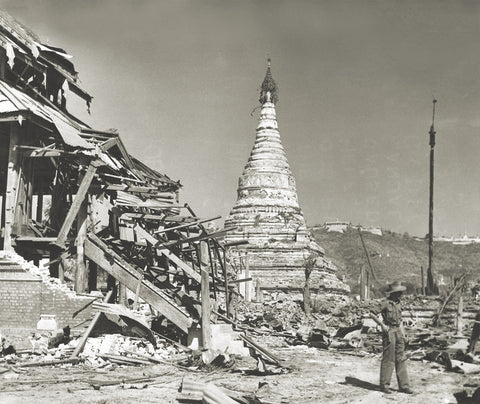
Book Review: ‘A War of Empires’ by Robert Lyman
a war oF empires
Japan, India, Burma & Britain: 1941-45
By Robert Lyman. 560 pp. Osprey, 2021. $35.
A cover blurb by historian James Holland declares Robert Lyman’s "A War of Empires," focusing on World War II in Burma, to be a “superb book.” I respectfully disagree; “superb” does not do it enough justice.
Japan’s seizure of Burma (today Myanmar) between December 1941 and May 1942, followed by protracted Allied efforts to retake it, is considered by many historians to be one of the most obscure of all World War II battlefronts. Even during the war, the British Fourteenth Army — comprising units from Britain, India and Africa—was known in Great Britain as the “Forgotten Army” compared with British armies fighting in North Africa and Europe. Yet in contradiction with its historical footprint, the Burma campaign has garnered a postwar library of singularly high standards, replete with histories by notable military scholars and powerful memoirs by former army officers. To rank Lyman’s book as the best of the lot, which I believe it is, is an exceedingly high accolade.
Lyman touches on all the elements that made fighting in Burma among the most physically tormenting, savagely primal, yet ultimately consequential in the war. Its battlefields amalgamated deadly diseases, wretched terrain and superheated soaking weather. Malaria, dysentery and skin diseases could render whole armies ineffective. And not only did Burma provide a gigantic battlefront by European standards (16,000 square miles), but its jungles, thick with mountains and cloven by watercourses, radically contracted the ability of units from platoons and divisions to conduct coordinated defense or advance. Burma illuminated the Japanese Imperial Army’s formidable strengths, including the hardihood and valor of its soldiers, yet also its striking logistical weaknesses.
The war in Burma also yielded major consequences for the Indian Army. Since its inception in the 19th century, the Indian Army included Indian soldiers as enlisted men, but not as officers. In the early 20th century, a very limited program began to commission Indian officers, but still rigidly barred them from commanding British soldiers or officers. This changed with figures like Field Marshals Sir Claude Auchinleck and Sir William Slim, who not only commissioned huge numbers of Indian officers but also authorized them to head units, regardless of the race of those under command. As leaders, Auchinleck and Slim also transformed the army’s tactical proficiency, logistics and health — in turn producing a modern Indian Army that rose phoenix-like from over two years of serial humiliations at the hands of the Japanese. Lyman rightly emphasizes that the Indian Army provided the “essence” of what would become modern India — today the world’s second-most populous nation.
Lyman’s narrative is brisk yet clear, filled with measured insights from strategic to tactical. While the book lacks a bibliography and includes sparse notes, the depth of the research is clear to those familiar with the archives. Its story is also replete with memorably presented characters, its greatest hero rightly being Field Marshal William Slim — today often deemed the war’s greatest British general for doing more with less in an extremely daunting physical environment than even Field Marshal Bernard Montgomery in North Africa and Europe. Lyman also drops important observations about the leadership, vision and sometimes even sanity of top figures in Burma such as Britain’s Lord Louis Mountbatten and General Orde Wingate, and Japan’s General Renya Mutaguchi.
Overall, "A War of Empires" is a highly readable yet sophisticated work about campaigns that never looked more consequential than they do today.
— Richard B. Frank is an internationally recognized authority on the Asia- Pacific War. The first volume of his trilogy on the war, Tower of Skulls , was published in March 2020.
This review was published in World War II in April 2022.
